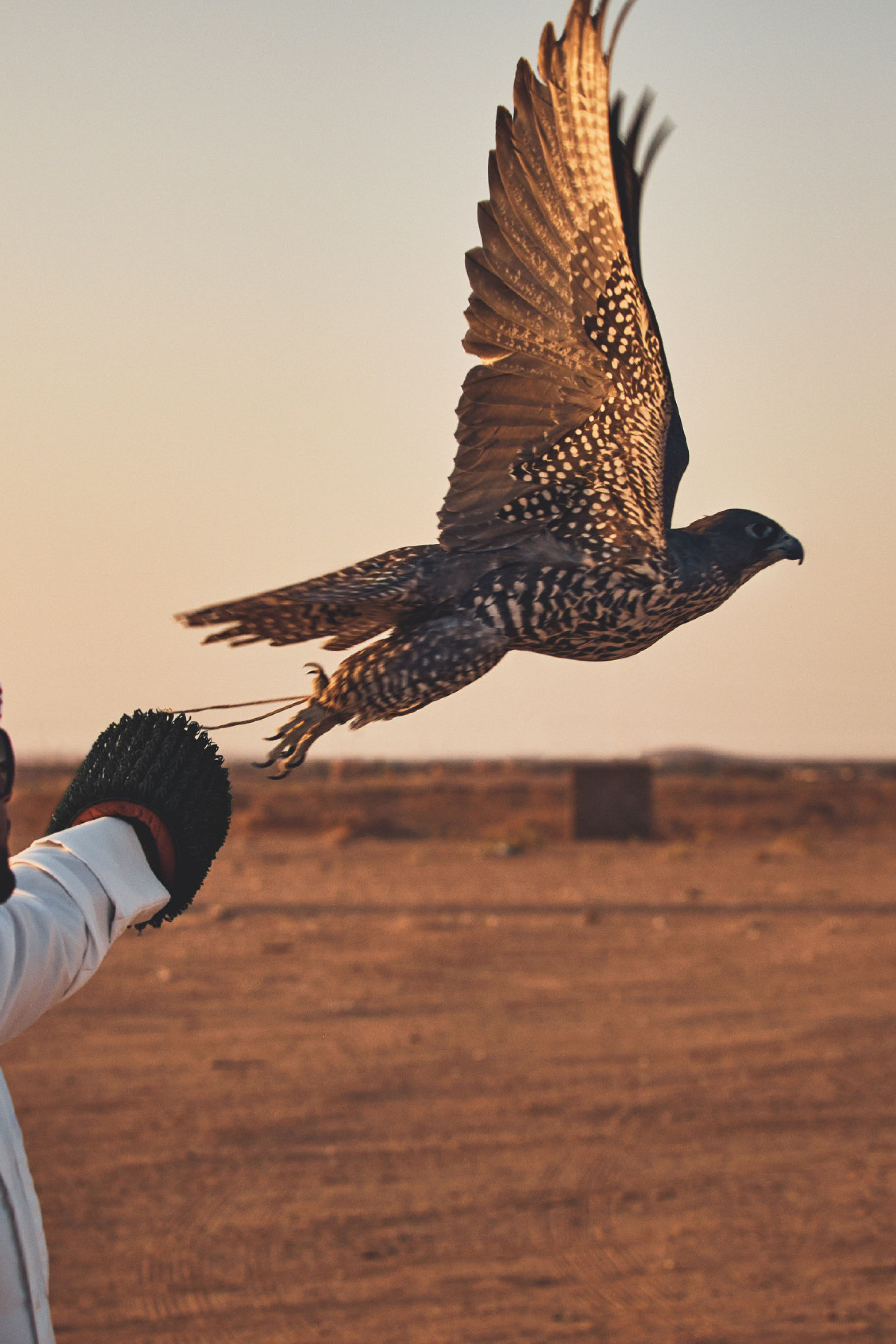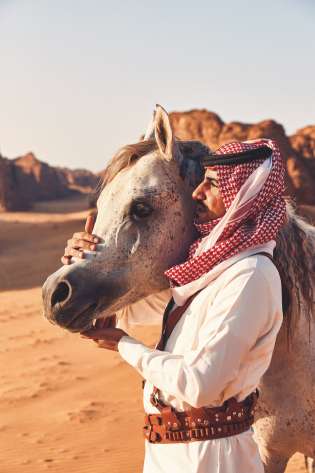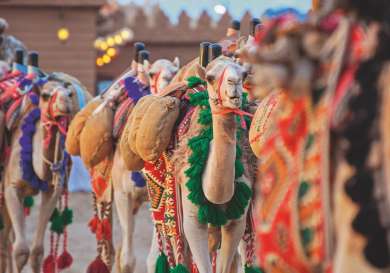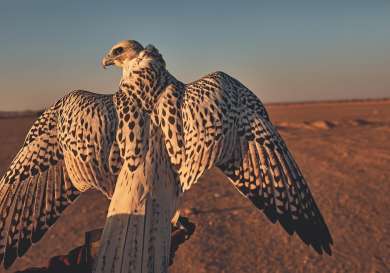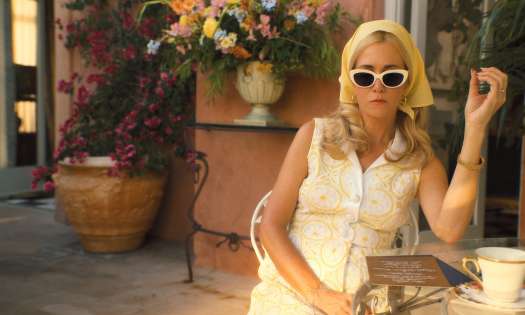Meet the authors
Ghada Al-Muhanna Abalkhail is a Saudi researcher and archivist of Saudi history. She has contributed to notable Saudi publication Ithra, where she has written about camels and their cultral connection to Arabia.
Tracy Gray has resided in the Arabian Gulf region for more than twenty years and is a specialist in falcons and falconry. She is a content creator for Al Kamda Falcons, a breeder and trainer of white gyrfalcons for the practice of falconry within the Gulf, and writes for various cultural organisations.
Debbie Burt is a multi-award-winning British equine writer with decades of experience as a specialist in the Arab horse industry. She is editor and chief photographer for the digital magazine The Arabian Racehorse and a regular contributor to the French publication Jour de Galop–Arabians, Gallop Magazine and International Thoroughbred.
Below, The Sybarite asks each author three questions, delving deeper into their chosen animal and the intended impact of their book.
How is the wildlife in Saudi Arabia unique?
Tracy Gray: When examining the wildlife in Saudi Arabia, one is struck by both the beauty and the utility. The Saudi way of life developed alongside, and in harmony with, its natural surroundings. The cultural practices that arose over time were still alive well into the 20th century. This has allowed a certain affinity to nature to remain even through a process of rapid modernisation, and it is still an essential component of Saudi identity.
Debbie Burt: The challenges of extreme temperatures during the day and night in the desert have presented unique living conditions for both the wild and domesticated animals and birds of the Arabian peninsula. Though the horses of Saudi Arabia are not 'wild' the Arabian breed has been developed to thrive in these conditions, possessing great stamina to travel long distances on limited food and water, and being of such a gentle disposition that they are able to share the tents of their Bedouin masters during sandstorms and to shelter there from the heat and cold.
Ghada AlMuhanna: Consider this; the landscape of Saudi Arabia is extremely diverse. However, it's mostly known for its deserts and by the presence of camels, a species deeply intertwined with the region's culture and history. The camel is perfectly adapted to life in the harsh desert environment, showcasing remarkable physiological traits such as the ability to go without water for extended periods and a unique gait that suits the sandy terrain. These camels are not just integral to the ecosystem but have also been central to the nomadic lifestyle of the region, serving as a means of transport and a source of food and clothing for centuries. Their significance is reflected in the cultural fabric of Saudi Arabia, symbolizing resilience and adaptability in a challenging landscape.
Which feature(s) of your chosen animal do you think makes it special/interesting?
Tracy Gray: The falcon is particularly interesting because it actually isn’t native to Saudi Arabia, it’s a visitor only. The falcon passes through on its migratory path where it was trapped, tamed, and hunted with through the winter and then released back into the wild to continue its migration. The practical necessity of falconry for the Saudi people - its essentiality to life in the desert - turned a once-a-year visitor into a cultural icon.
Debbie Burt: There is still much to learn regarding the initial domestication of the horse, though with the discovery of the extensive petroglyphs featuring early horse riders in the Ha'il region, our knowledge base expands further. The Arabian horse is one of the world's oldest breeds and its influence can be found in many others around the globe, though most significantly in the development of the modern thoroughbred racehorse.
Ghada AlMuhanna: I personally finds the eyes so beautiful. They're a fascinating feature that makes this animal particularly special and interesting. Adapted for the desert, their eyes are equipped with an exceptionally long and thick set of eyelashes that serve as a barrier against sand and dust, common in their arid habitat. This natural defense mechanism allows camels to navigate through sandstorms without damage or discomfort to their eyes. Additionally, camels have a unique, thin, and transparent third eyelid that works as a sort of "windshield wiper" to clean their eyes. It can close this lid to protect their eyes while still being able to see. This feature is a remarkable example of evolutionary adaptation, enabling the camel to thrive in harsh desert conditions where other species might struggle
Why do you think your book is important and how do you hope people engage with it?
Tracy Gray: It would almost impossible to understand the people of the Arabian Peninsula without understanding their connection to the falcon. An ancient relationship, going back more than 5000 years. Though so many of the tools humans have used for survival have disappeared, people still train and hunt with falcons. I think the answer to why lies within this book.
Debbie Burt: I hope that the Horses from Saudi Arabia will give an overview into the Arabian breed and the role that horses in general are playing in the development of Saudi Arabia today. The incredible photographs by Oliver Pilcher that accompany the text, illustrate the breed's unique characteristics of grace and beauty combined with strength and stamina. The horse has become an intrinsic part of the Arabian peninsula enabling the tribes to prosper in battle, later used as gifts and now, equestrian sport is at the forefront of developing a new future for the region, through horse racing, show jumping, endurance and polo.
Ghada AlMuhanna: I believe that my book is vital for those living outside of Saudi Arabia, as it offers a unique window into the cultural and historical significance of these animals in the Saudi context. Camels are more than just creatures of burden; they symbolize resilience, endurance, and the deep connection between the Saudi people. Through this book, I aim to foster a greater appreciation and understanding of this bond, hoping readers, both within and outside Saudi Arabia, will gain a deeper insight into the rich tapestry of Saudi culture and history.
Each book retails for €1200,00, discover more on each book below.
Falcons from Saudi Arabia, Horses from Saudi Arabia and Camels from Saudi Arabia.
